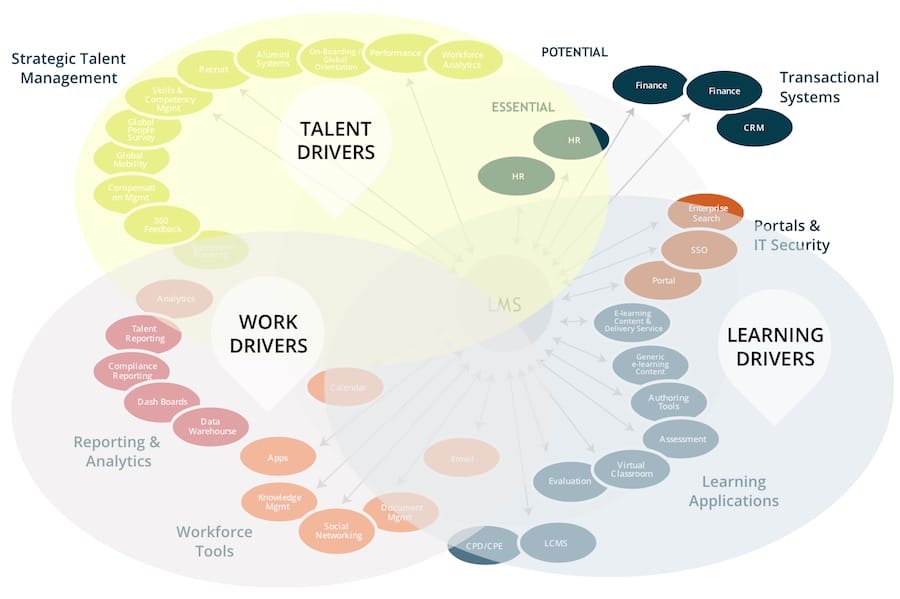The following post is an excerpt from the Integrating the HR landscape on the Cloud” whitepaper, recently published by Docebo. This section highlights the central role of learning in the talent and business cycle, and shows how a LMS can be seamlessly integrated with software for talent management, as well as with analytics and reporting tools. For more detail, download the whitepaper!
A focus on eLearning
by David Wilson, CEO of Fosway Group
Learning plays an essential role in the talent process but is often overlooked by HR; high quality learning is the engine room of effective talent development and a key factor in both attracting and retaining key talent. Learning touches, and can therefore drive greater value to, all parts of the talent and work cycle:
- Learning via induction is critical to onboarding new recruits and reducing time to competency
- Learning is key to ensuring your people are capable and compliant
- Learning is core to developing existing staff and building future skills
- Learning is central to individual career advancement and for building organisational capability
- Learning is a key tool for raising performance
- Learning opportunity is a critical factor in employee retention
The central role that learning has in the talent and business cycle, can also be illustrated by looking at the typical interfaces that an LMS has within the broader corporate infrastructure. Whilst HR leaders often simply assume that an LMS will just interface with their core HRMS, in reality, this is a massive oversimplification.
The LMS will interface with many applications, including;
- Core HR and other transactional systems (e.g. Finance)
- Intranet portals and security management systems
- Other learning portals, learning applications and content
- Talent management applications such as performance management, or recruitment systems
- Basic work systems such as e-mail and calendar
- Line of business applications
The following is an example of an LMS integration diagram for a real company (large enterprise).

In overall terms though, the above integrations can be grouped into three main headings:
- Integration with other Learning Systems and content, of which there are many.
- Integration with Talent Management, of which there are a few but important in connecting the user experience and data model for managing talent.
- Integration with Work Systems, of which there are a few but growing rapidly in number, and which are critical to the business including assessment of competence to perform defined work tasks and other similar concepts.
This can summarised visually in a similar way to the previous diagram:

